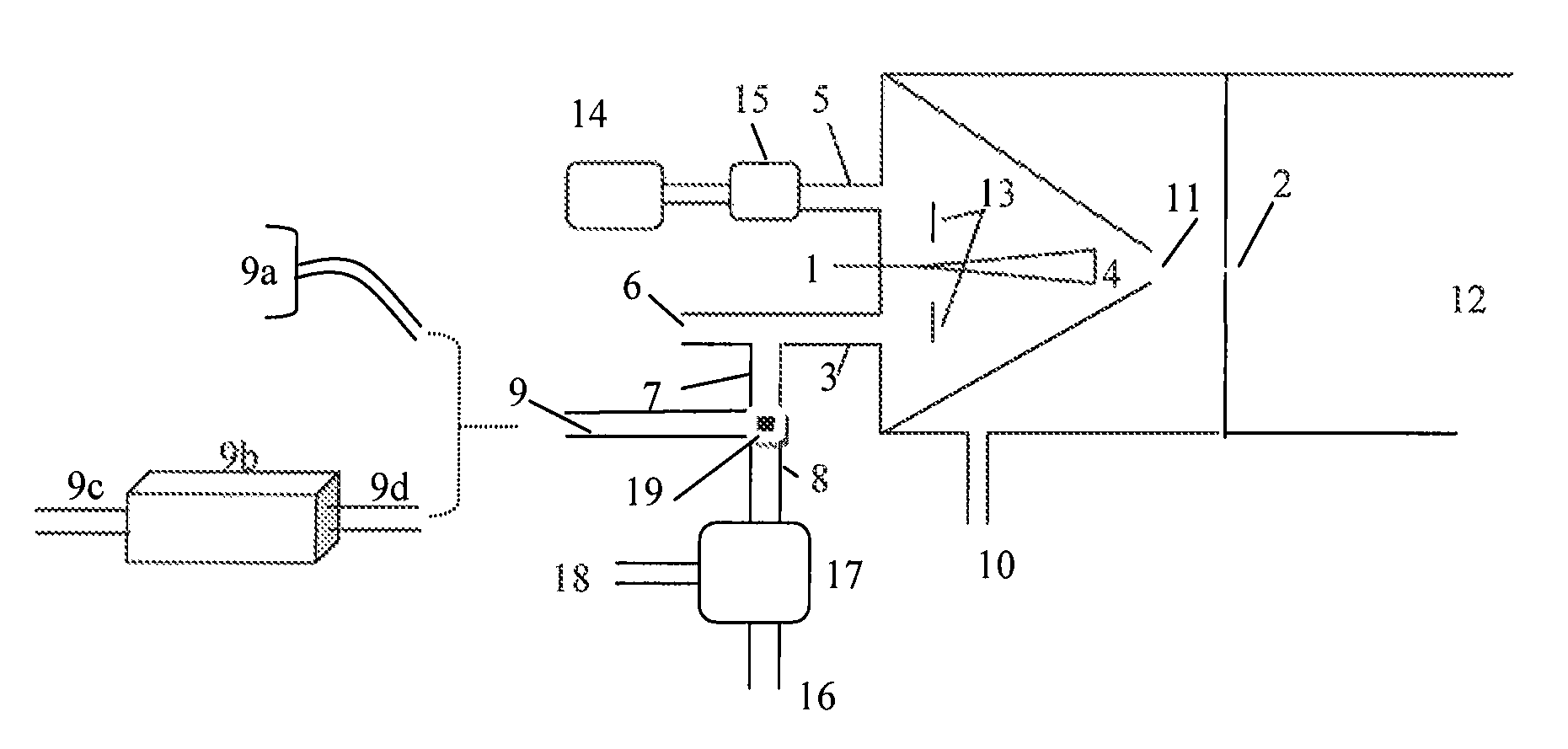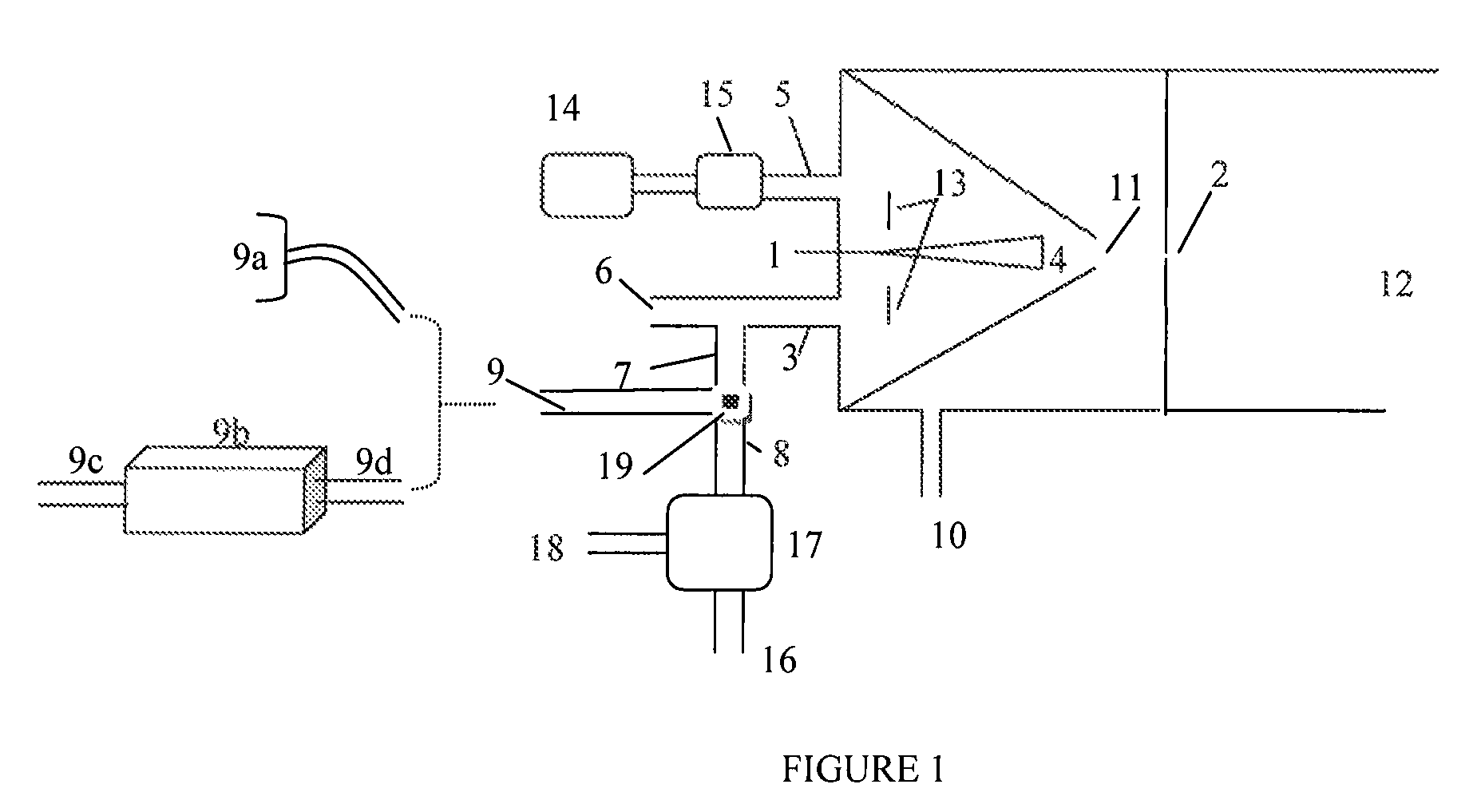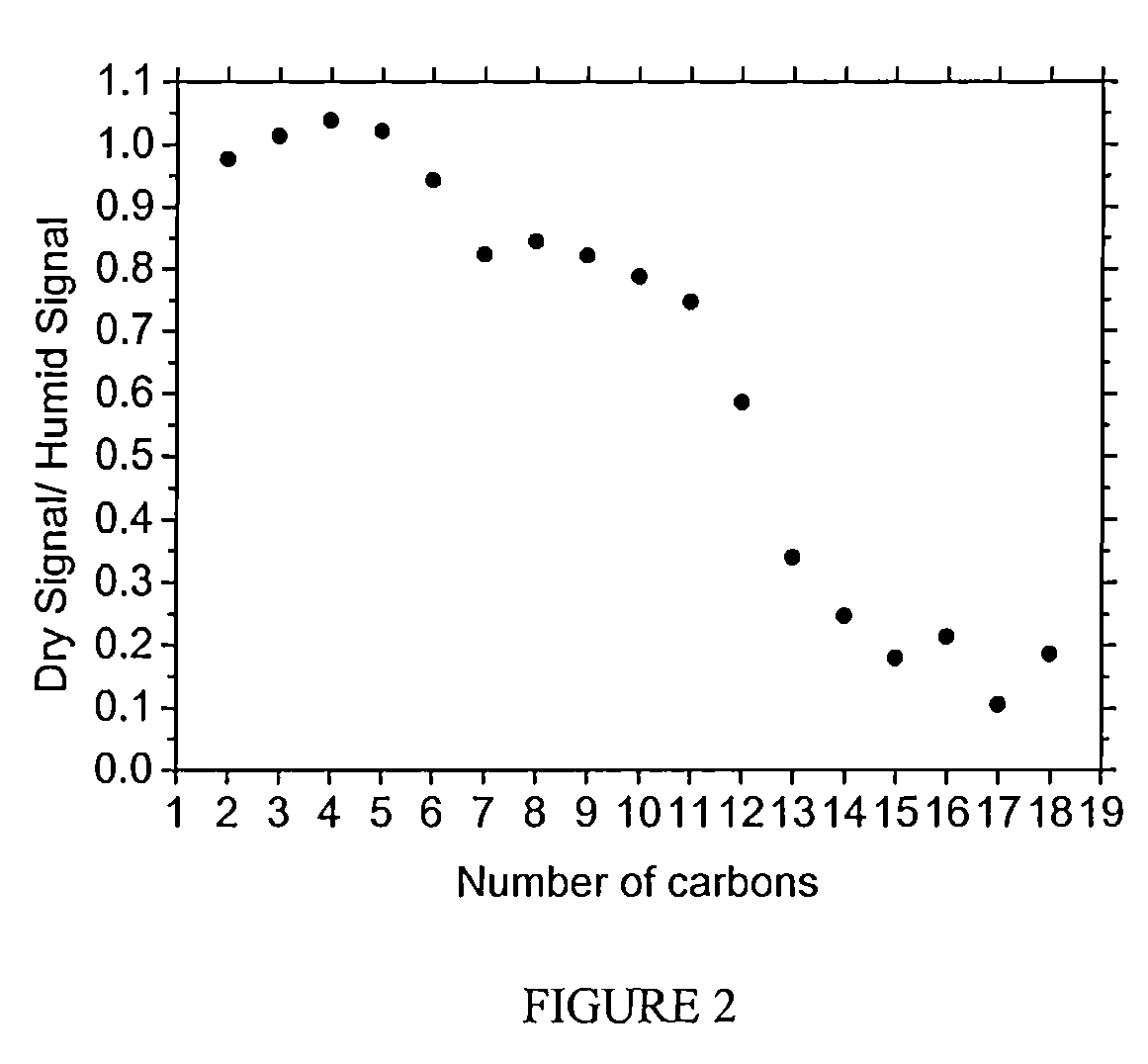Method to analyze and classify persons and organisms based on odor patterns from released vapors
- Summary
- Abstract
- Description
- Claims
- Application Information
AI Technical Summary
Benefits of technology
Problems solved by technology
Method used
Image
Examples
first embodiment
[0019]the invention uses a SESI charger (also referred to as an ionizer) interfaced to an API-MS (API mass spectrometer) for breath analysis. This is shown schematically in FIG. 1, which improves upon the arrangement of U.S. patent application Ser. No. 11 / 732,770 in two key respects: (i) the charger operates now in negative polarity to promote ionization of fatty acids and related vapors, and (ii) the background spectrum (to be subtracted from the breath spectrum in order to provide a signal more directly representative of breath) is obtained from ambient air after bringing it to near 100% relative humidity.
[0020]We have used a variety of API mass spectrometers for rapid analysis of breath, including Sciex's API 365 triple quadrupole, and Sciex's Qstar time of flight mass spectrometer. The use of these and other API mass spectrometers with similar SESI sources also in negative mode for explosive detection yields comparable results Martinez-Lozano et al. (2009). Many other API MS sys...
second embodiment
[0026]In the invention using the same instrument as in the prior embodiment, cutaneous vapors are analyzed. The sample is now drawn by locating the open end of line 9 in the vicinity of the human skin (for instance the palm of the hand). This embodiment can also be used with other organisms via slight variations, as just discussed for breath, whereby the term skin is also used broadly to include various organisms, for instance the cellular membrane or the leaf of a plant. In one embodiment the background air is drawn also from the atmosphere through the open end of line 9, placing it at a safe distance from any individual. In this case, the level of humidity in the vicinity of the hand is not greatly affected by the hand, so, humidification of the background is not essential. However, humidification of both the sample and the background is a useful possibility that not only provides a better humidity control, but also enhances considerably the sensitivity towards long chain fatty ac...
PUM
 Login to View More
Login to View More Abstract
Description
Claims
Application Information
 Login to View More
Login to View More - R&D
- Intellectual Property
- Life Sciences
- Materials
- Tech Scout
- Unparalleled Data Quality
- Higher Quality Content
- 60% Fewer Hallucinations
Browse by: Latest US Patents, China's latest patents, Technical Efficacy Thesaurus, Application Domain, Technology Topic, Popular Technical Reports.
© 2025 PatSnap. All rights reserved.Legal|Privacy policy|Modern Slavery Act Transparency Statement|Sitemap|About US| Contact US: help@patsnap.com



